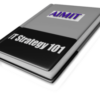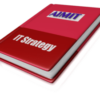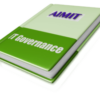In this community-focused guide, you’ll learn practical strategies for leveraging groups and activity feeds to expand your professional network, build credibility, and foster meaningful collaborations in any industry.
1. Introduction
Consultants operate in a highly competitive space where standing out isn’t just about having the right credentials—it’s also about forging strategic relationships and consistently updating one’s expertise. In today’s interconnected business environment, professional communities serve as a powerful catalyst for growth. By engaging with like-minded peers, consultants can share insights, gain fresh perspectives, and secure new opportunities. This article sets the stage for understanding why communities—especially digital ones—matter so deeply to consulting professionals.
1.1 Why Professional Communities Matter
The Essence of Community in Consulting
Peer support, knowledge sharing, and collaboration are central to a consultant’s success. When you join a community of professionals who understand your challenges, you tap into a collective wisdom that can help you:
- Identify innovative solutions to client problems
- Exchange strategies for operational efficiency
- Co-develop ideas that position you as a thought leader
Consultants who collaborate within niche communities often find unexpected synergies, leading to joint projects, referrals, and ongoing partnerships—all essential for sustainable growth.
The Shift to Digital Networking
While in-person gatherings, conferences, and coffee meetups remain valuable, digital platforms have dramatically expanded the reach and immediacy of professional networking. By tapping into online groups, forums, and activity feeds:
- You gain broader access to global thought leaders and potential clients
- You engage in real-time discussions, ensuring you stay ahead of fast-moving trends
- You maintain ongoing dialogue with peers, which fosters deeper, more continuous relationships
This digital shift doesn’t replace face-to-face interactions but amplifies their impact. The connectivity offered through platforms like CIO Index bridges geographic and time-zone gaps, creating communities that are always “open for business.”
2. The Value of Niche Communities
Broad, all-encompassing networks have their benefits, but niche communities offer a level of focus and camaraderie that can be a game-changer for consultants. Whether you specialize in cybersecurity, digital transformation, or organizational change, connecting with professionals who share your specific interests can propel your consulting practice forward more effectively than participating in generic forums alone.
2.1 Why Specialized Groups Are Crucial
Targeted Knowledge Sharing
In a niche community, every member is invested in the same subset of topics, ensuring discussions that cut straight to the core of your specialty. Whether it’s emerging technologies or industry-specific regulations, the insights you gain (and share) will be highly relevant. This targeted approach helps you:
- Quickly identify cutting-edge solutions
- Stay updated on niche market trends
- Collaborate on detailed challenges unique to your field
Trusted Environment
Smaller, focused groups often develop a strong sense of trust and camaraderie among members. This dynamic makes it easier to:
- Exchange sensitive information or learnings in a more open manner
- Provide and receive honest feedback without fear of judgment
- Build credibility as a contributor who genuinely understands the group’s topics
The end result is a tight-knit network of professionals who rely on one another for support, feedback, and business opportunities.
2.2 Building Personal Brand and Authority
Demonstrating Expertise
When you share well-researched insights, case studies, or thought-provoking questions in a niche community, you position yourself as a go-to resource for others. Over time, regular participation and high-quality contributions establish you as:
- A subject-matter expert who can be trusted
- A potential partner for collaborative consulting engagements
- A sought-after advisor for organizations needing specialized guidance
Gaining Visibility
The more active and value-driven your presence, the more recognizable you become among peers and potential clients. In communities geared toward IT and management, this visibility can:
- Increase the likelihood of referrals from peers who respect your expertise
- Lead to direct inquiries from organizations looking for consultants with your skill set
- Grow your personal following as professionals align your name with authority in your niche
2.3 Fostering Deeper Relationships
Collaboration Opportunities
Consultants often discover new ventures and revenue streams by collaborating with other experts who bring complementary skill sets to the table. In niche communities, these opportunities multiply as:
- Members can co-author whitepapers, research, or case studies
- Joint projects become feasible, tackling complex client needs from multiple angles
- Partnerships form naturally based on genuine mutual interests
Long-Term Connection
Because niche communities focus on highly specific areas of interest, they tend to retain members for extended periods. This continuity lays the groundwork for more meaningful, long-term relationships:
- Peers become mentors and collaborators, not just fleeting online connections
- Shared history and context allow for deeper, more impactful networking
- Trust and rapport evolve over time, solidifying your reputation in your specialty
By engaging in niche communities that align with your consulting focus, you set the stage for purposeful interactions that not only expand your network but also accelerate your professional growth in tangible ways.
3. Engaging Through Groups
Active participation in groups is one of the most effective ways to build a thriving professional network. On CIO Index, there are specialized groups for various IT and consulting topics, offering numerous opportunities to connect, learn, and grow. This section provides a roadmap for identifying the right groups, participating successfully, and collaborating on bigger projects.
3.1 Identifying the Right Groups
Assess Your Professional Goals
Before you dive into any group, clarify your objectives. Ask yourself:
- Which client industries (healthcare, finance, manufacturing, etc.) do I serve or want to break into?
- What are my core consulting focus areas—strategy, digital transformation, cybersecurity?
- Are there emerging fields or trends I’m curious about, such as AI or blockchain?
By defining your priorities, you’ll be better equipped to find and join groups that align with your expertise and aspirations.
Explore CIO Index Groups
CIO Index offers a variety of industry-specific and topic-focused communities. Take the time to:
- Review group descriptions: Understand each group’s purpose, audience, and discussion themes.
- Look for alignment: Choose groups where you can both contribute knowledge and learn from peers.
- Gauge activity levels: Groups with regular posts and discussions will give you more value—and exposure.
Selecting the right groups ensures that your engagement remains purposeful, helping you connect with professionals who share your focus and can offer relevant insights.
3.2 Best Practices for Active Participation
Consistent Contribution
Visibility hinges on regular engagement. Whether you’re posting articles, sharing insights, or asking questions, steady involvement demonstrates commitment and expertise. Aim to:
- Post original content or curated articles at least once a week
- Provide unique angles or context that sparks further discussion
- Use professional, concise language that resonates with your audience
Listen Before Speaking
Every group has its own culture, norms, and recurring pain points. Spend some time observing before diving in:
- Read previous threads to gauge the group’s style and interests
- Identify common challenges and knowledge gaps where you can add real value
- Tailor your contributions to address these themes directly and helpfully
Provide Constructive Feedback
Nothing builds credibility faster than thoughtful, solution-oriented responses to your peers’ posts. When you see a question or an issue raised:
- Offer practical tips or resources based on your experiences
- If you disagree, do so professionally by explaining your reasoning and suggesting alternative approaches
- Encourage a growth mindset by showing genuine interest in others’ viewpoints
Such positive participation not only demonstrates your expertise but also fosters goodwill in the community.
3.3 Collaboration and Co-Creation
Project Collaborations
Niche groups often bring together specialists from various backgrounds—some might be experts in areas that complement your own. Look for ways to join forces:
- Co-author research papers or case studies to combine expertise and reach a broader audience
- Launch pilot programs or proof-of-concept initiatives that benefit clients from multiple angles
- Use the group’s built-in communication tools to set up brainstorming sessions or informal “think tanks”
These collaborations can significantly expand your skill set, portfolio, and professional contacts.
Virtual Events and Webinars
Online events provide a dynamic way to share knowledge and actively engage with group members. In collaboration with peers or even CIO Index moderators, you can:
- Co-host webinars or workshops on hot-button issues (e.g., cloud migrations, data analytics, IT governance)
- Create interactive sessions with polls, Q&A segments, and breakout rooms for deeper discussions
- Establish yourself as a thought leader by inviting guest speakers or case study participants who reinforce your event’s theme
By moving beyond text-based discussions and into live, interactive formats, you elevate the level of community engagement while showcasing your expertise in a more personal, impactful way.
Engaging through groups is about more than posting content; it’s about forging meaningful relationships, sharing actionable insights, and ultimately positioning yourself as a trusted consultant. By choosing the right communities, contributing consistently, and actively seeking collaboration, you lay a strong foundation for long-term success on CIO Index and beyond.
4. The Power of Activity Feeds
In many ways, the activity feed serves as the “pulse” of a digital community. It’s where users converge to share updates, discuss industry developments, and engage with one another in real time. On CIO Index, the activity feed delivers a dynamic snapshot of what’s happening across the platform—who’s posting, what trends are emerging, and where the most engaging conversations are taking place. By leveraging activity feeds effectively, you can boost your visibility, establish your authority, and foster deeper connections with fellow consultants and decision-makers.
4.1 Real-Time Engagement
Instant Interaction
Activity feeds offer a rapid-fire approach to networking. Instead of waiting for a scheduled forum post or a weekly newsletter, you can:
- Quickly respond to a question or comment, showcasing your expertise on the spot
- Engage in time-sensitive discussions—particularly useful when hot topics or breaking news emerges
- Share updates, such as upcoming events, new service offerings, or relevant articles you’ve found
By responding promptly, you stay top of mind and demonstrate that you are both knowledgeable and approachable.
Fostering Ongoing Dialogue
Unlike static blog posts or articles, which may receive sporadic comments, an activity feed keeps threads active and visible for a more extended period. This continuous engagement can:
- Build momentum around key industry topics
- Encourage follow-up questions and deeper dives into particular challenges
- Bring new voices into the conversation, as fresh eyes see the ongoing thread in real time
The result is a lively community atmosphere where ideas evolve and expand through regular interaction.
4.2 Showcasing Thought Leadership
Curate High-Value Content
A well-managed activity feed acts like a personal broadcast channel for your professional brand. One impactful way to use it is by curating relevant, high-quality content for your audience:
- Share articles or whitepapers that align with the interests of CIOs, tech strategists, or fellow consultants
- Post case studies demonstrating industry best practices or innovative solutions
- Offer succinct commentary, highlighting why the content is worth reading and what key takeaways readers should note
By consistently delivering valuable insights, you position yourself as a reliable resource that peers and potential clients look to for industry developments.
Spark Meaningful Conversation
Thought leadership isn’t just about broadcasting your own ideas; it’s also about facilitating dialogue that helps the community grow. To do this:
- Pose open-ended questions that invite multiple viewpoints
- Encourage group members to share their experiences or alternative perspectives
- Actively moderate or nurture these conversations by responding to comments, thanking contributors, and summarizing key insights
When you stimulate lively discussions, you enhance your reputation as a leader who values input from others and understands the complexities of industry challenges.
4.3 Balancing Professional and Personal Presence
Authenticity Matters
While it’s crucial to maintain a professional tone, remember that consultants are people too—and personal anecdotes or viewpoints can make your content more relatable. You can humanize your brand by:
- Sharing brief personal stories about lessons learned in the field
- Explaining unique experiences that shaped your consulting approach
- Expressing genuine appreciation for others’ contributions, reinforcing a culture of support and respect
By striking this balance, you allow peers and potential clients to see not just your expertise but also your personality and values.
Avoid Over-promotion
While an activity feed is an excellent platform for showcasing your offerings, overdoing it can alienate followers. To maintain trust and engagement:
- Pair promotional updates (like a new webinar or service launch) with informative content that readers can immediately use
- Focus on how your products or services solve specific problems instead of resorting to hard-sell tactics
- Show genuine interest in your audience’s challenges—invite them to share thoughts and ask questions rather than only pushing your agenda
Ultimately, the goal is to cultivate an environment where your professional value is evident, yet balanced by genuine engagement and a willingness to support others.
Leveraging the power of activity feeds can significantly amplify your professional presence. By engaging in real-time conversations, offering high-quality insights, and blending authenticity with strategic promotion, you’ll stand out as a consultant worth following—and, more importantly, partnering with.
5. Creating Win-Win Connections
Building meaningful connections within a professional network is about mutual benefit—where each interaction has the potential to grow into something more substantial for both parties. By focusing on shared interests and opportunities, you can create relationships that are both professionally enriching and personally rewarding.
5.1 Identifying Mutual Interests
Overlap in Expertise
A strong network often begins with recognizing complementary or overlapping skill sets. Whether you specialize in strategic planning, cybersecurity, or digital transformation, look for peers whose areas of expertise can augment—or be augmented by—your own. Examples might include:
- A data analytics expert partnering with a cybersecurity specialist to offer an integrated service
- Consultants with domain expertise in healthcare connecting with IT strategists to address sector-specific challenges
By seeking out professionals whose knowledge complements yours, you open the door to collaborative projects that provide clients with holistic solutions.
Expand Your Knowledge Base
Even if another member’s specialty doesn’t directly overlap with yours, engaging with them can still be highly beneficial. Perhaps they:
- Operate in an emerging market you’re eager to learn about
- Use methodologies you’re curious to adopt in your own practice
- Bring fresh perspectives that challenge your current consulting models
Broadening your exposure to different industries and viewpoints not only helps you stay informed but also positions you as a more versatile consultant.
5.2 Turning Online Connections into Opportunities
One-on-One Conversations
Public group discussions and activity feeds are great starting points, but deeper relationships often develop in more private settings. When you sense a connection is promising—maybe someone resonates with your approach or has an intriguing project—don’t hesitate to:
- Send a direct message expressing your interest in learning more about their work
- Schedule a virtual coffee chat or video call to delve into shared challenges or mutual goals
- Propose a joint effort, such as co-authoring a thought-leadership piece or hosting a webinar together
This personalized outreach can be the catalyst for long-term collaborations and even new client engagements.
Mentorship and Learning
Engaging in mentorship—either as a mentor or a mentee—can provide immense value. As a mentor, you can:
- Refine your leadership and communication skills by guiding someone less experienced
- Stay attuned to emerging trends or concerns from the next generation of consultants
- Build loyalty and goodwill that can translate into referrals down the line
Conversely, seeking mentorship exposes you to new knowledge, networks, and problem-solving approaches that can accelerate your professional development.
5.3 Building Social Proof
Recommendations and Endorsements
In a digital-first age, clients and partners often evaluate credibility by looking at social proof. Ask peers, former clients, or collaborators for:
- Written testimonials on your profile, highlighting specific results you delivered
- Skill endorsements, which can serve as quick indicators of your expertise
- LinkedIn or CIO Index recommendations, further validating your professional standing
Each piece of positive feedback strengthens your reputation and sets you apart from competitors who may lack that external validation.
Case Studies and Success Stories
Stories are powerful tools for illustrating real-world impact. Where possible (and with client permission), share details on:
- Challenges addressed: The client’s problem, your assessment, and your strategy
- Solutions implemented: The frameworks, tools, or methodologies that led to success
- Results achieved: Quantifiable metrics like cost savings, efficiency gains, or revenue growth
Case studies not only demonstrate your ability to solve complex problems but also give prospective clients a tangible example of the value you bring to the table.
By proactively identifying mutual interests, turning online connections into real-world opportunities, and showcasing your expertise through social proof, you create win-win scenarios that benefit everyone involved. In doing so, you’ll establish a dynamic professional network that continually supports and elevates your consulting practice.
6. Leveraging CIO Index to Maximize Your Network
CIO Index is more than just another professional platform—it’s a specialized community tailored to IT leaders, executives, and consultants. By taking full advantage of its features and best practices, you can drastically enhance your visibility, credibility, and business opportunities.
6.1 Tailored Community Features
Groups and Forums
CIO Index hosts dedicated spaces for specialized IT and consulting topics, allowing you to zero in on the conversations that align with your expertise. These groups and forums:
- Help you connect with peers who share your professional interests, enabling meaningful exchanges
- Serve as a hub for niche discussions, best practices, and emerging industry trends
- Promote collaboration through project announcements, Q&A threads, and idea-sharing
By joining groups that resonate with your consulting focus, you can tap into high-value discussions and build a reputation as a knowledgeable contributor.
Activity Feeds
Beyond the deeper dives offered by groups and forums, CIO Index’s activity feeds provide a snapshot of real-time conversations and updates from across the platform. Here, you can:
- Post quick tips, article links, or timely insights that showcase your expertise
- Engage with trending topics by liking, commenting, or sharing posts that align with your interests or experience
- Stay informed about community-wide announcements—from webinars to major IT developments
The activity feed amplifies your presence, helping you remain visible and relevant in the eyes of colleagues and potential clients.
6.2 Gaining Visibility on CIO Index
Profile Optimization
Your CIO Index profile is often the first impression potential collaborators and clients will have of you. Optimize it by:
- Highlighting your core competencies, certifications, and thought-leadership topics
- Including relevant credentials, such as industry awards or notable client success stories
- Adding a professional headshot and a concise yet impactful summary of your consulting background
A well-structured profile not only validates your expertise but also encourages profile visitors to engage, connect, or even inquire about your services.
Content Strategy
Sharing valuable content is one of the most powerful ways to demonstrate your authority and spark engagement on CIO Index. Consider:
- Publishing blog posts or whitepapers that tackle specific challenges in IT management or consulting
- Posting research findings that highlight new trends, technologies, or data-backed insights
- Leveraging case studies to illustrate practical applications of your expertise and measurable results
By regularly posting high-quality content, you establish yourself as a trusted resource—making it more likely that CIO Index members will remember and recommend you.
6.3 Measurable Impact
Tracking Engagement
To gauge whether your efforts on CIO Index are resonating with the community, keep an eye on:
- Likes and comments on your posts, which signal interest and prompt further discussion
- Shares or reposts, indicating that others find your content valuable enough to pass along
- Private messages inquiring about your services or expertise
Collectively, these metrics can help you identify what’s working, what needs refinement, and where to invest more of your time.
Identifying Leads
CIO Index offers features designed to help you discover who’s showing interest in your posts or profile. Pay attention to:
- Profile views, which can indicate a curiosity about your background or services
- New followers who may be potential clients or collaborators in the near future
- Direct inquiries or requests for proposals from members who found you through your published content
By analyzing these interactions, you can move promising connections down the pipeline—whether that means scheduling introductory calls, sharing additional resources, or discussing potential partnerships.
By leveraging CIO Index’s tailored tools, optimizing your profile, and consistently sharing expert insights, you’ll not only solidify your professional standing but also cultivate a network of peers and prospective clients eager to collaborate. Over time, these focused efforts yield a tangible return on your investment—new project opportunities, stronger professional relationships, and a reputation as a go-to authority in your consulting niche.
7. Overcoming Common Barriers
No matter how beneficial an online community or professional platform may be, consultants often face practical and psychological barriers that hold them back from full engagement. Recognizing and proactively addressing these challenges can help you reap the maximum rewards from your participation on CIO Index.
7.1 Time Constraints
Scheduling Engagement
One of the most common hurdles is finding the time to be active in communities. To avoid sporadic, ineffective participation:
- Set aside dedicated time slots—whether daily or weekly—to review discussions and contribute insights
- Use calendar reminders or task management tools to ensure this becomes a consistent habit
- Recognize that even short, focused sessions can yield tangible benefits if done regularly
Delegating Tasks
For consultants juggling multiple priorities, delegating certain community engagement tasks can be a game-changer:
- Assign team members to research topics or create initial drafts of content for you to refine
- Encourage junior consultants to post relevant insights under their name, expanding both their exposure and yours
- Collaborate with virtual assistants or content creators to keep up a steady posting schedule without sacrificing project deliverables
By involving your broader team, you not only lighten your workload but also help your colleagues build their own professional brands.
7.2 Hesitation to Self-Promote
Balancing Value and Marketing
Self-promotion can feel uncomfortable for many professionals, especially when operating within a tight-knit community. However, marketing your services need not be overly salesy if you strike the right balance:
- Lead with solutions—address specific problems that group members face and naturally introduce your services as part of the solution
- Maintain a value-first approach, offering actionable tips or case studies that benefit your audience
- Use stories and anecdotes to illustrate how your approach solves real-world challenges, rather than listing services outright
Establishing Expertise Genuinely
Building a reputation as an authority figure happens over time and through consistent, high-quality engagement:
- Focus on substance: Provide data, personal experiences, or references to back up your claims
- Stay informed about industry trends, and share relevant updates that underscore your knowledge
- Encourage dialogue—ask open-ended questions, show interest in others’ perspectives, and build on their insights
When your community sees you as genuinely helpful and knowledgeable, they’ll naturally turn to you for paid consulting engagements.
7.3 Navigating Different Group Cultures
Observing Etiquette
Each group or forum may have its own culture—some are formal and data-driven, while others are more casual and conversational. To effectively integrate and avoid missteps:
- Spend initial time reading ongoing threads to understand the group’s style and tone
- Take note of common do’s and don’ts, such as whether promotional links are allowed or if direct offers are frowned upon
- When in doubt, ask a group moderator or veteran member about any unwritten rules or conventions
Respect for group norms not only prevents conflict but also fosters a positive reputation.
Aligning with Moderators
Group moderators or leaders often play a significant role in shaping community standards and directing conversations:
- Engage them directly to learn about the group’s objectives, hot-button issues, or upcoming initiatives
- Offer to help moderate or host events if you feel aligned with the group’s mission
- Seek feedback on your content and interactions to better tailor your contributions
Developing a positive rapport with moderators can lead to invitations to share insights on a larger platform—further boosting your credibility and visibility.
By implementing strategies to manage your time, thoughtfully present your expertise, and adapt to each group’s unique culture, you’ll overcome the most common barriers to successful community engagement. The result is a stronger, more sustainable network that fuels your consulting practice for the long term.
8. Conclusion
Building and sustaining a successful consulting practice requires more than just individual expertise; it necessitates a strong professional network that constantly feeds you with insights, opportunities, and support. By leveraging the power of communities—especially through platforms like CIO Index—consultants can position themselves for long-term success, forge meaningful relationships, and stay ahead of emerging trends.
8.1 Recap of Key Takeaways
Community as a Growth Tool
Consultants thrive when they engage actively in niche groups and activity feeds. These spaces not only provide targeted knowledge and real-time interactions but also pave the way for collaborative ventures, referrals, and stronger personal branding. Consistent, value-driven participation sets you up as a thought leader, attracting the kind of visibility and trust that grows your business.
Long-Term Strategy
Community building isn’t a quick fix—it’s a long-term investment. Regular engagement, thoughtful contributions, and genuine relationship-building efforts will pay dividends over time. By consistently demonstrating your expertise and willingness to help others, you establish a reputation that endures and scales along with your consulting goals.
8.2 Engage with CIO Index!
Join Relevant Groups Today
Don’t wait—explore the diverse groups on CIO Index that align with your consulting focus. Each group represents an opportunity to learn from peers, share your experiences, and discover potential collaborators or clients.
Share Your Expertise
Make the most of CIO Index’s activity feeds by posting questions, insights, and thought leadership content. By consistently adding value—whether through curated articles, original research, or industry commentary—you cement your reputation as a go-to expert in your field.
Build Lasting Relationships
Above all, remember that professional communities thrive on trust, reciprocity, and consistent interaction. Focus on being genuinely helpful, open-minded, and responsive. Over time, these qualities will help you develop the long-standing relationships that elevate both your reputation and your consulting practice.
Leverage the tools and strategies outlined in this article to fully harness the power of CIO Index. In doing so, you’ll not only advance your career but also create a ripple effect of value within the IT and consulting landscape.








